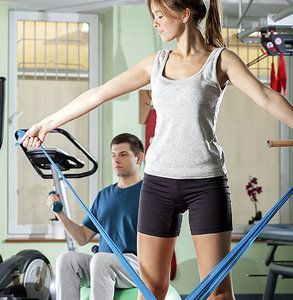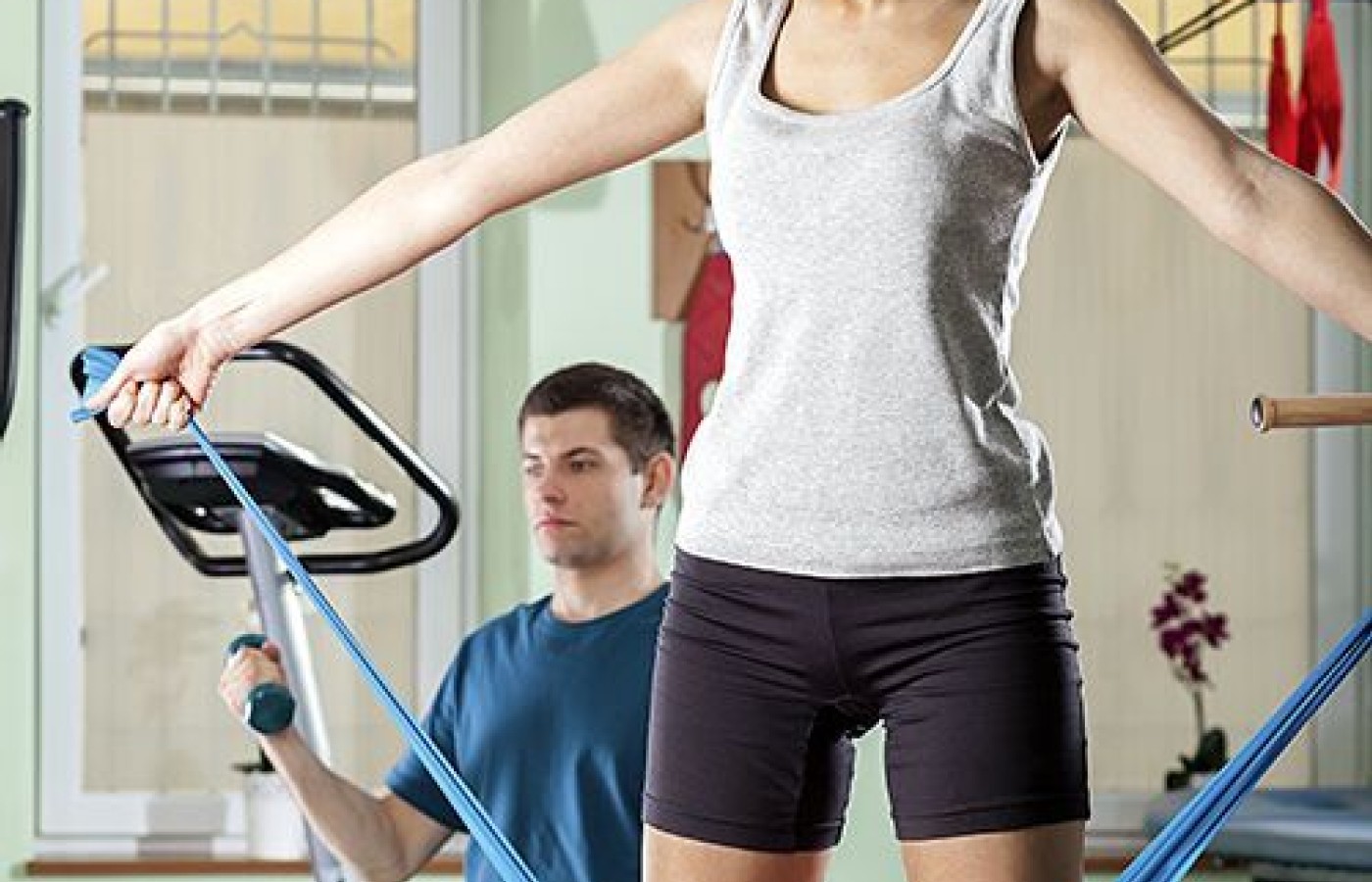Some doctors thrive in a personality-based clinic and have a loyal following no matter what services or equipment they offer, but for most chiropractic offices who are trying to grow and expand, new equipment purchases help us stay relevant and continue to service our client base in the best, most up-to-date manner possible. So, regarding equipment purchasing: should you lease, get a bank loan, or pay cash?
Designing a Fitness Plan (Part 4): Blending Pain Relief With Healthy Aging
Editor's Note: Part 3 of this article appeared in the March 1 issue and contains hyperlinks to parts 1 and 2.
Pain relief is still the No. 1 reason patients come to my office. However, most of my patients have other goals as well, such as: "I want to lose 10 to 20 pounds"; "I feel old and want to slow down the aging process"; "My doctor says I am becoming a diabetic and need to exercise"; or "I'm tired and want more energy."
I think I have a patient-centered practice, so along with addressing their pain and goal, I start by trying to understand their attitude. Is the patient sitting in front of me the "fix me so I can be more active like I was before" person, the "fix me now because now that I hurt, I'm motivated to exercise and do what you tell me to do" person or the "just fix me now so I can get on with my life" person?
Any pain is tragic and I wish every patient was a quick responder. Unfortunately, at this point in time we don't really know the full answer to why two people with the same injury and the same pain have different outcomes. Why does one patient get better in five days while another goes on to surgery or chronic pain?

However, based on the current science I have heard about from key researchers in our field such as Dr. Haavik and Dr. Kawchuk, we know three important things about what we can do to help our patients respond: 1)Reducing spine stiffness is a good thing. 2) Increasing paraspinal muscle activation is a good thing. 3) Increasing disc diffusion (water content) is a good thing.
Renovating With Movement
We also know there's no denying a regular exercise regimen is essential to our staying healthy and living better, no matter how old we are. I think setting goals with our patients is one of the best ways to make sure we're being the best doctor we want to be. Ask any chiropractor who is a diplomate in rehabilitation and they will tell you rehab exercises should start on day one in your office. No matter how much pain that patient is in or what the problem is, we like to start renovation with movement right away.
A logical treatment approach includes reducing spine stiffness with evidence-based techniques; increasing muscle thickness and activation with adjustments and exercise; and increasing disc diffusion with manipulation, modalities if you choose, proper sleep hygiene recommendations, and properly loading and unloading the spine.
Exercise sequencing includes cueing the glutes and getting the core in a neutral position; checking and improving breathing patterns if needed; and explaining the use of gripping with the hands and feet.
What's in Your Exercise Arsenal?
Stability and motor control are posture specific. I start exercising patients in a supine position (lifting the head to the chest, lifting the head and torso off the floor so the lower border of the scapula clears the floor, and then trying to simultaneously lift one or both legs at a time). Patients need to be able to roll to a prone position and perform an exercise like a normal hip extension pattern; a yoga press-up moving not just the lumbar spine but the thoracic spine region, too; and then active arch-ups. From a prone exercise position they can be taught another rolling maneuver such as log rolling. Once they are supine again, they can learn elbow-to-opposite-knee rolling. From there, it is natural to go into a quadruped position exercise like a child's pose, birddog or bear crawl.
The on-all-fours position can become an active crawl to a diva pose or a sitting yoga pose. From sitting, we can go to kneeling on both knees on the floor with continuous-loop-band arm movements to half-kneeling (one knee on the floor) with band arm movements or a kettlebell overhead press.
Then I check and introduce squatting variations (reverse squats are going from the down position to the up position). Squatting becomes a vertical stance with both feet parallel in a wide stance, to a narrow stance (which challenges balance more than a wide stance) and then a staggered stance. The staggered stance is where we explore lunges, which become gait and balance training opportunities.
All of the above exercises can take place in a single office visit, or they can be spread out throughout several treatments or weeks. This movement template is meant to activate the muscles and support my manipulation, which reduces spine, ankle, hip or other stiffness.
If I can improve gait, I am improving the No. 1 activity of daily living (walking), and hopefully reducing some of the detrimental effects of prolonged and excessive sitting. Tie in the above exercise progressions you teach your patients in the office with current CDC guidelines that call for about 150 minutes a week of moderate activity, especially brisk walking. That actually translates to 7,000-8,000 steps a day. And since an average adult already walks about 5,900 steps daily, an extra 30 minutes of walking will easily get you up to that point.
My attitude is, "Any amount of activity you can do today that you didn't do yesterday is a good thing" and "If you are already walking for fitness, or working out in a gym or a Pilates studio, etc., try to be a little more intense each week."
The test of time regarding which exercises I "at least" recommend for improving a bad back follows the above sequence. I still include some form of self-myofascial release (foam roll, massage balls, etc.), plank variations, hinge variations, squat variations, swings, push moves, pull moves, and the Turkish get-up (TGU) with all of its variations. My exercise programs are designed to allow the patient to experience some floor work (usually body weight moves), moving to kneeling and standing band work, balance challenges, and kettlebells or free weights. In this way, it becomes a pretty comprehensive rehab program with a template that will include training in:
- Slow strength
- Fast strength
- Concentric strength
- Eccentric strength
- Multiarticular complex strength
- Reciprocal inhibition strength
- "Integrative exercise" and "playing position" strength
I simply think in terms of push, pull, lift, carry and torsional tasks.
Blend Pain Relief & Healthy Aging
The patient's goal of getting out of pain can be blended with your goals of fostering a healthy aging or wellness practice. Patient goals and your goals should be things we strive to achieve – not "all-or-nothing" propositions. I want to see patients get out of pain as fast as possible; however, I also want to help them improve posture, move around with better flexibility, lose weight, gain muscle and exercise – but not to the point that they are exhausted and sore all day. I want them to enjoy doing movement and stick with it.



